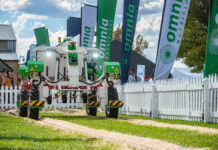
In the wake of increasing climate change menace globally, there has been emergence of pests and diseases witnessed in new, unaffected geographies posing great threats to food security and poverty alleviation efforts among smallholders who largely depend on farming as their main source of livelihoods.
Taking Pepper ringspot virus (PepRSV), for instance, which belongs to the Tobra virus genus and closely related to the Tobacco rattle virus (TRV) and Pea early browning virus.
This is a virus species that for a long time was only reported in Brazil, South America where it caused diseases on tomato (Solanum lycopersicum), pepper (Capsicum annuum) and artichoke (Cynara scolymus) according to a report by the European and Mediterranean Plant Protection Organization (EPPO) Global Database.
Its spreading in other countries or regions has been unknown until recently when the pest was detected in South Africa in October 2022 in a commercial potato planting in Polokwane, Capricorn District Municipality, and Limpopo Province, FAO reports.
Although there have been commendable measures to prevent its spreading to other areas and neighbouring nations through phytosanitary measures, the pest poses real threat to the production of potatoes which are the most common staple food consumed by most people in South Africa.
However, PepRSV threat which is also to many communities across African countries who depend on the crop as an important source of food and income, has a potential solution in hybrid potato breeding technology.
According to Charles Miller, Director of Strategic Alliances and Development at Solynta, Dutch-based potato breeding technology company, PepRSV (which is soil-borne) has been found to affect both seed and ware potatoes.
“For many African potato growers, this virus poses a significant challenge, particularly because they have traditionally relied on tubers harvested from the soil as seed stock. These tuber seeds can carry virus infections and may unwittingly be transported from one location to another by unaware farmers,” said Miller.
It is because of this that there has been intensified urgency within the agricultural community to come up with new technologies that can help combat the ever increasing incidences of soil and seed-borne diseases that pose a threat to major crops, including potatoes.
Hybrid True Potato Seeds
Miller says clean starting materials, exemplified by innovations like Solynta’s Hybrid True Potato Seeds (HTPS) breeding technology, poises a foundational element in the fight against PepRSV.
“The HTPS bypass the virus as the seeds are not produced from the soil; thus they enable enhanced disease and pest resistance since the quality of the initial seed is crucial as it directly affects the resilience of crops against soil-borne pathogens’ relentless attacks,” he said.
Such clean starting materials as HTPs that can be tested and certified acts as robust defense against spread of diseases such as Pepper ringspot (PepRSV), he added.
He says, the innovation of HTPS lies in its capacity to empower potato growers to actively mitigate the risks linked with soil and seed-borne diseases.
“Through adopting HTPS, growers acquire a dependable defense that not only preserves the quality of produce but also reduces the economic losses stemming from disease-related crop.”
PepRSV attack a variety of crops
According to Kassim Owino, a Kenyan-based seed expert and an experience agronomist who is also a reliable Solynta partner in speeding up the adoption of HTPS in the country, PepRSV is a real threat not only to potato production but to a number of other crops.
“This virus attacks many crops drawn from Solanaceae family and Irish potato (Solanum tuberosum) is a cool weather crop which belongs to the family, whose other members include tomatoes, capsicums and egg plants, among others,” said Owino.
He says once it is detected, the best way to contain it is to quarantine the attacked crops by implementing phytosanitary measures to restrict the movement of host material from infected to non-infected areas.
“We commend what has been done in South Africa to help contain the disease from even spreading to the neighbouring countries as it can be detrimental to many crops’ production in Africa.”
Furthermore, experts should also share insights into disease management practices, exchange research findings, and establish standardised protocols for the disease prevention, added Owino.
According to him, governments must also come together to share information, implement preventive measures, and collectively develop strategies that mitigate the spread of such viruses.
PepRSV symptoms
Some signs of PepRSV comprise ring-shaped spots on tubers and internal browning in a ring formation. On the leaves, the virus manifests as yellowing.
It also frequently presents as a latent infection and may be mistakenly identified as internal browning.
Need for collaboration
Miller says there is need for collaboration among governments and trading blocs to help hasten the adoption of innovative technologies such as HTPs which emerges as a valuable tool in mitigating the effects of PepRSV and analogous diseases.
“It is encouraging to note from the recent Africa Seed Trade Association (AFSTA) conference held in Mombasa, Kenya the increasing demand for new technologies to spur production especially in the seed sector and the willingness by industry players to work together to ease processes allowing the adoption of such technologies in African countries,” he said.
In essence, said Miller, governments must work together to establish a unified stance against the menace of seed and soil-borne diseases, demonstrating a collective dedication to nurturing global food security and agricultural resilience.







